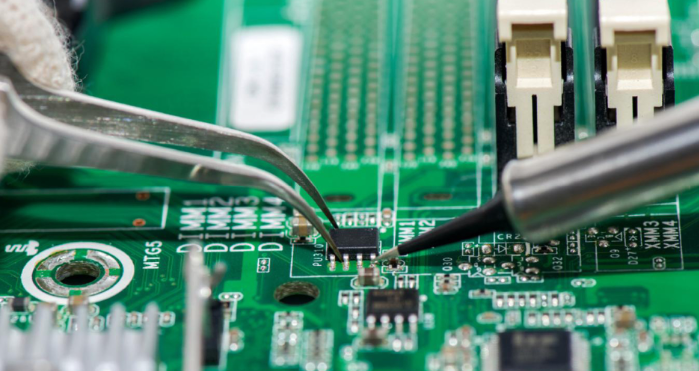How Hermetic Seals Are Revolutionizing Consumer Electronics
Release time:2025-01-08
Introduction
The consumer electronics industry is evolving rapidly, with devices like smartphones, smartwatches, earbuds, and smart home systems becoming integral to our daily lives. These devices are becoming smaller, more advanced, and increasingly used in environments where they are exposed to moisture, dust, and other environmental factors.
One of the key technologies driving the reliability and durability of consumer electronics is the hermetic seal. Hermetic seals provide airtight protection for sensitive components, shielding them from contaminants and enhancing their longevity.
What Are Hermetic Seals?
A hermetic seal is an airtight barrier that protects sensitive components from environmental factors such as moisture, dust, and gases. Unlike standard seals, which may allow minimal leakage or deterioration over time, hermetic seals are designed to provide long-term protection under a wide range of conditions.
In consumer electronics, hermetic seals are used to safeguard internal components like microchips, sensors, batteries, and connectors. By isolating these components from external elements, hermetic seals ensure that devices operate reliably and maintain their performance over extended periods.

The Role of Hermetic Seals in Consumer Electronics
1. Preventing Moisture and Dust Ingress
Modern consumer electronics are used in diverse environments, from humid bathrooms to dusty outdoor spaces. Even a small amount of moisture or dust can cause corrosion, electrical short circuits, or mechanical failure in a device.
Hermetic seals create a robust barrier that prevents moisture and dust from entering the internal components of devices. For example, in smartphones, hermetic seals protect internal circuits and sensors, enabling them to withstand accidental water exposure or extreme humidity without compromising functionality.
2. Improving Device Longevity
Consumers expect their electronics to last longer while maintaining optimal performance. However, exposure to environmental factors can degrade internal components over time, shortening the lifespan of devices.
Hermetic seals play a critical role in extending the durability of electronics by shielding components from wear and tear caused by external contaminants. In devices like wireless earbuds and smartwatches, hermetic seals ensure that components like batteries and sensors remain functional even with daily exposure to sweat, rain, or dust.
3. Enabling Miniaturization
Consumer electronics are becoming increasingly compact and lightweight. For example, wearables like fitness trackers and smart rings pack advanced technologies into tiny enclosures. Achieving this level of miniaturization while maintaining device reliability is a significant engineering challenge.
Hermetic seals allow manufacturers to create smaller, more efficient enclosures for sensitive components. By providing airtight protection in compact designs, hermetic seals enable devices to remain durable and functional despite their reduced size.
4. Enhancing Water-Resistance and Ruggedness
Water-resistant and rugged electronics are in high demand, particularly for outdoor and fitness enthusiasts. Devices labeled with water-resistance ratings, such as IP67 or IP68, rely heavily on hermetic seals to achieve their durability standards.
For instance, smartwatches designed for swimming or diving incorporate hermetic seals to prevent water from reaching internal circuits and batteries. Similarly, action cameras and portable speakers use hermetic sealing to maintain functionality in wet or harsh environments.
5. Protecting Sensitive Sensors
Consumer electronics increasingly rely on sensitive sensors, such as accelerometers, gyroscopes, heart rate monitors, and fingerprint scanners, to deliver advanced functionality. These sensors are highly susceptible to environmental factors like moisture and debris.
Hermetic seals safeguard sensors by isolating them from contaminants, ensuring they provide accurate readings over time. This is especially critical in health-focused wearables, where sensors must deliver precise data for medical or fitness applications.
Applications of Hermetic Seals in Consumer Electronics
1. Smartphones
Smartphones are exposed to a wide range of environments, from rain to dusty construction sites. Hermetic seals protect critical components like the processor, cameras, and batteries, ensuring reliable performance even in challenging conditions.
2. Wearables
Wearable devices, including fitness trackers, smartwatches, and smart glasses, are often exposed to sweat, rain, and water. Hermetic seals protect sensors and electronics in these devices, enabling them to withstand daily use in various environments.
3. True Wireless Earbuds
Wireless earbuds rely on hermetic seals to protect their batteries and internal components from sweat, water, and dust. This sealing ensures long-lasting performance, even during workouts or outdoor activities.
4. Smart Home Devices
Smart home devices like smart doorbells, security cameras, and thermostats are often used outdoors or in humid conditions. Hermetic seals ensure these devices remain operational and reliable despite exposure to environmental factors.
5. Health Monitoring Devices
From smart blood pressure monitors to wearable ECG devices, health-focused electronics require hermetic sealing to protect sensitive components and maintain accurate readings.
Benefits of Hermetic Seals in Consumer Electronics
1. Enhanced Reliability
Hermetic seals protect critical components from environmental damage, ensuring that devices operate reliably in a wide range of conditions.
2. Improved User Satisfaction
Consumers value devices that are durable and water-resistant. Hermetic seals allow manufacturers to meet these expectations, resulting in higher user satisfaction and fewer product returns.
3. Reduced Maintenance Costs
By preventing damage from moisture and dust, hermetic seals reduce the likelihood of repairs or replacements, saving costs for both manufacturers and consumers.
4. Support for Advanced Features
Hermetic seals enable the integration of sensitive sensors and advanced technologies, supporting features like water resistance, fitness tracking, and wireless charging.
Materials Used in Hermetic Seals for Consumer Electronics
1. Glass-to-Metal Seals
Glass-to-metal hermetic seals are widely used in applications like connectors and battery enclosures. These seals provide excellent durability and resistance to environmental factors.
2. Ceramic-to-Metal Seals
Ceramic-to-metal seals are ideal for devices exposed to extreme conditions, offering excellent insulation and thermal stability.
3. Polymer Seals
Flexible polymers, such as silicone or fluorosilicone, are often used in less demanding applications. These seals offer good water resistance and flexibility but are less durable than glass or ceramic seals.
Challenges in Using Hermetic Seals in Consumer Electronics
Miniaturization: As devices become smaller, creating reliable hermetic seals for compact components becomes increasingly challenging.
Cost: Advanced sealing materials and technologies can increase manufacturing costs, particularly for mass-market consumer electronics.
Material Compatibility: Ensuring that the sealing materials are compatible with other components is crucial for long-term reliability.
Conclusion
Hermetic seals are revolutionizing consumer electronics by improving reliability, durability, and functionality in a wide range of devices. From smartphones and wearables to smart home systems, these airtight seals protect sensitive components from environmental damage, enabling modern electronics to meet the demands of today’s consumers.
As consumer devices continue to evolve, hermetic sealing technologies will remain essential in delivering high-performance, water-resistant, and long-lasting electronics. By enabling manufacturers to create durable and reliable devices, hermetic seals are shaping the future of consumer electronics.






